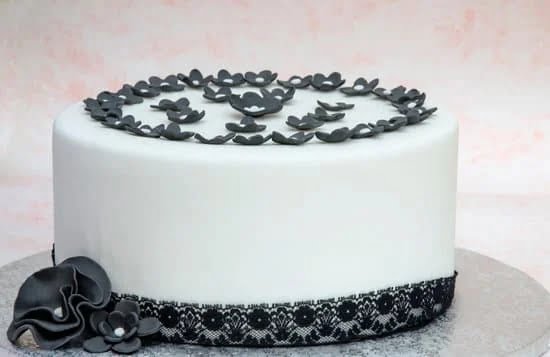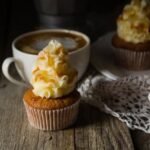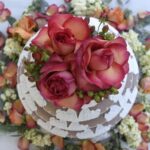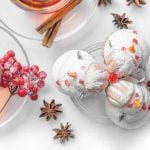Are you looking to elevate your cake decorating skills? If so, you’ve come to the right place. In this article, we will explore the art of decorating a cake with butter icing.
From basic tools and ingredients to advanced piping techniques, we will cover everything you need to know to create stunning designs on your cakes. Whether you’re a beginner or a seasoned baker, mastering the art of butter icing decoration can take your cakes to the next level.
Butter icing is not only delicious but also incredibly versatile when it comes to decorating cakes. With just a few simple tools and some creativity, you can transform a plain cake into an edible work of art. In this comprehensive guide, we will walk you through the steps of preparing your cake for decorating, different types of butter icings, piping techniques, adding color and flavor, as well as troubleshooting common issues.
Whether you’re looking to create beautiful floral designs or intricate borders, butter icing provides endless possibilities for customization. And with our tips and tricks for adding embellishments and finishing touches, you’ll soon be able to impress your friends and family with professionally decorated cakes. So let’s dive in and discover the beauty of butter icing decoration.
Basic Tools and Ingredients Needed for Cake Decorating With Butter Icing
Butter icing is one of the most versatile and popular options for decorating cakes, offering a rich and creamy texture that can be easily molded into various designs. However, before you start decorating your cake with butter icing, it’s important to have the right tools and ingredients on hand.
To begin with, you will need a good quality stand mixer or hand mixer to whip up the butter icing to the perfect consistency. Other essential tools include piping bags, piping tips in different shapes and sizes, offset spatulas for smoothing the icing, and a turntable for easy access to all sides of the cake.
It’s also helpful to have a bench scraper for creating clean edges on your cake, as well as a cake leveler for cutting even layers.
In terms of ingredients, you will obviously need butter as the main component of the icing. Along with butter, confectioners’ sugar (also known as powdered sugar), vanilla extract for flavoring, and a pinch of salt are commonly used to make a basic buttercream frosting. For cream cheese frosting, you will need cream cheese in addition to these basic ingredients. Swiss meringue buttercream requires egg whites, granulated sugar, unsalted butter, and vanilla extract.
Once you have gathered all the necessary tools and ingredients, you are ready to move on to preparing the cake for decorating by leveling it off if necessary, filling any layers with additional frosting or fillings as desired, and crumb coating the entire cake before applying your final design with butter icing.
By ensuring that you have all the right tools and ingredients at your disposal, you can set yourself up for success when it comes to decorating a cake with butter icing. Whether you are new to cake decorating or an experienced baker looking to expand your skills with different types of frostings and techniques, having these basics covered will make the process much smoother and more enjoyable.
Preparing the Cake for Decorating
Before you can start decorating a cake with butter icing, it is important to prepare the cake properly. This includes leveling the cake layers, filling them with delicious fillings, and applying a crumb coat to ensure a smooth surface for your butter icing.
Leveling the cake layers is essential for creating a stable and even base for decorating. This can be achieved by using a serrated knife or a cake leveler to remove any domed tops and create flat, even layers.
Once your cake layers are leveled, it’s time to add a delicious filling between each layer. Whether you choose to use fruit preserves, chocolate ganache, or flavored buttercream, the filling adds an extra element of flavor and moisture to your cake.
After filling the layers, it’s important to apply a thin layer of icing over the entire cake to seal in any crumbs. This is known as crumb coating and helps create a smooth foundation for decorating with butter icing.
The process of leveling, filling, and crumb coating may seem intimidating at first, but with practice and patience, it becomes easier over time. These steps set the stage for beautifully decorated cakes that not only look stunning but also taste delicious. Following these basic preparation steps ensures that your butter icing decorations will have the perfect canvas to shine on.
Types of Butter Icing
Butter icing is a versatile and delicious way to decorate a cake, and there are several types to choose from. Each type of butter icing has its own unique flavor and texture, so you can choose the one that best suits your taste and the design of your cake.
Types of Butter Icing
- Buttercream: This classic butter icing is made with butter, powdered sugar, and flavorings. It is smooth and creamy, making it perfect for piping decorations or spreading on cakes.
- Cream Cheese: Cream cheese butter icing is tangy and slightly more firm than traditional buttercream. It pairs well with red velvet or carrot cakes, adding a delicious flavor to the finished product.
- Swiss Meringue: Swiss meringue butter icing is made by whisking egg whites and sugar over a double boiler until it reaches a certain temperature, then whipping in butter until light and fluffy. This type of butter icing has a silky texture with a light, airy feel on the palate.
Each type of butter icing can be used to create beautiful designs on cakes or cupcakes. Whether you’re looking for something classic or want to experiment with different flavors and textures, there’s a butter icing for every occasion.
When decorating a cake with butter icing, consider the flavor profile of your cake and the design you have in mind. Experiment with different types of butter icings to find the perfect match for your creation. By understanding the unique properties of each type of icing, you can elevate your cake decorating skills and create stunning edible works of art.
Piping Techniques and Tips for Creating Beautiful Designs
Choosing the Right Piping Tips
When it comes to creating beautiful designs with butter icing, the right piping tips can make all the difference. For intricate designs and details, small round tips or star-shaped tips work best. Larger tips are ideal for creating borders and filling in larger areas. It’s important to have a variety of tips on hand to achieve different effects and designs.
Proper Piping Technique
Before you start decorating your cake with butter icing, it’s essential to master the proper piping technique. Hold the piping bag at a 90-degree angle to the surface of the cake, applying even pressure as you pipe. Practice on a piece of parchment paper before moving onto the cake to get a feel for how the icing flows from the bag and to perfect your technique.
Creating Intricate Designs
For more intricate designs such as flowers or lace patterns, it’s helpful to outline the design first with a lighter color butter icing before filling it in with a contrasting color. This layering technique adds depth and dimension to your decorations. You can also use specialized piping tips such as petal tips or leaf tips to create realistic floral designs.
Mastering piping techniques is an essential aspect of learning how decorate a cake with butter icing. With practice and patience, you can create stunning designs that will impress any guest at your next celebration. Remember that experimenting with different piping tips, colors, and techniques is key to expanding your decorative repertoire and enhancing your cake decorating skills.
Adding Color and Flavor to Butter Icing for a Personalized Touch
Choosing the Right Colors and Flavors
When it comes to decorating a cake with butter icing, adding color and flavor is a great way to personalize your creation. Whether you want to match a specific theme or simply add an extra pop of taste, there are plenty of options available.
Gel food coloring is recommended for butter icing as it won’t change the consistency of the frosting like liquid food coloring might. When it comes to flavors, vanilla is a classic choice, but you can also experiment with other extracts such as almond, lemon, or even fruit purees.
Mixing in the Colors and Flavors
Once you’ve chosen your desired colors and flavors, it’s time to mix them into the butter icing. Start by adding small amounts at a time and then gradually increase until you achieve the desired color or flavor intensity. Remember that adding too much liquid flavoring could affect the consistency of your butter icing, so use them sparingly. For coloring, start with a small amount as well and add more if needed.
Creating Ombre or Marbled Effects
If you want to take your cake decorating skills up another notch, consider creating ombre or marbled effects with your butter icing. With ombre, you can mix varying shades of one color to create a beautiful gradient effect on your cake. For marbled effects, simply combine different colored icings together in a piping bag before decorating your cake. These techniques add an extra level of sophistication and visual appeal to your finished creation.
Decorating With Butter Icing
Decorating a cake with butter icing offers a world of creative possibilities, including the opportunity to create beautiful flowers, decorative borders, and intricate designs. The versatility of butter icing allows for endless creativity in cake decorating, making it a popular choice for both professional bakers and hobbyists alike. In this section, we will explore some tips and techniques for using butter icing to adorn cakes with stunning floral designs, elegant borders, and eye-catching details.
When it comes to creating flowers with butter icing, it’s important to use the right consistency of icing to achieve the desired results. For delicate petals and intricate floral designs, a thinner consistency is ideal, while a stiffer consistency works well for piping leaves and other foliage. By using various piping tips such as petal tips, round tips, and leaf tips, you can create an array of lifelike flowers that will add a touch of elegance to any cake.
In addition to floral designs, butter icing can also be used to create decorative borders that add an extra element of flair to your cake. From simple ruffles and shells to more elaborate lace or basketweave patterns, there are countless border designs that can be achieved with butter icing. With the right piping techniques and a steady hand, you can bring your cake to life with beautifully crafted borders that complement the overall design.
Lastly but not least importantly when it comes to intricate designs, using butter icing opens up a world of creative possibilities. Whether you want to pipe intricate scrollwork, monograms, or other personalized details onto your cake, butter icing provides the perfect medium for bringing those ideas to life. With practice and patience, you can master the art of piping intricate designs with butter icing and turn your cakes into edible works of art.
| Butter Icing Decoration | Tip |
|---|---|
| Creating Flowers | Use different consistencies of icing for different flower parts |
| Decorative Borders | Experiment with various piping tips for different border designs |
| Intricate Designs | Practice is key in mastering the art of piping intricate designs |
Troubleshooting Common Issues With Butter Icing Decoration
Decorating a cake with butter icing can sometimes present challenges, but with the right troubleshooting tips, you can overcome common issues and create a beautiful finished product. One of the most common problems when decorating with butter icing is air bubbles in the icing, which can create an uneven texture on the cake.
To prevent this, make sure to use a paddle attachment on your mixer to avoid incorporating too much air into the icing. Additionally, gently tap the filled piping bag on the counter to release any air bubbles before starting to pipe.
Another issue that decorators often encounter is butter icing that is too runny or too stiff. If your buttercream is too runny, try adding more powdered sugar a little at a time until it reaches the desired consistency.
On the other hand, if your icing is too stiff, you can add small amounts of milk or cream until it becomes easy to spread or pipe. It’s important to remember that achieving the perfect consistency for butter icing may require some trial and error, but with practice, you’ll become more adept at recognizing and adjusting for the right texture.
Additionally, color consistency in butter icing can sometimes be difficult to achieve, especially when working with large batches of colored icing. To ensure uniform color throughout your decoration process, it’s helpful to divide your icing into smaller portions before adding color and then mixing it thoroughly.
This will help prevent streaks or uneven coloring in your finished design. Lastly”, always keep in mind that practicing different techniques will help you become more skilled at troubleshooting issues with butter icing decoration.
| Common Issue | Troubleshooting Tip |
|---|---|
| Air bubbles in icing | Use paddle attachment and tap filled piping bag |
| Runny or stiff icing | Add powdered sugar or milk/cream accordingly |
| Inconsistent color | Divide icing into smaller portions before adding color and mix thoroughly |
Final Touches
In conclusion, learning how to decorate a cake with butter icing can elevate your baking skills to the next level. Whether you are a novice or an experienced baker, mastering the art of butter icing decoration opens up a world of creative possibilities for your cakes. From simple borders to intricate designs, butter icing allows you to personalize and beautify your creations in countless ways.
After mastering the basic tools and ingredients needed for cake decorating with butter icing, as well as preparing the cake for decorating and exploring different types of butter icing, you are ready to delve into the exciting realm of piping techniques. Experimenting with colors and flavors will give your cakes a personalized touch, making them truly unique.
Furthermore, troubleshooting common issues with butter icing decoration and adding embellishments and finishing touches will help you perfect your skills. Remember that practice makes perfect when it comes to cake decorating with butter icing, so don’t be afraid to experiment and let your creativity shine through. With dedication and patience, you can create stunning cakes that will impress friends and family alike.
Frequently Asked Questions
How Do You Decorate a Cake With Buttercream for Beginners?
Decorating a cake with buttercream for beginners involves using the right tools, like piping bags and various tips, to create different decorations. Start by applying a crumb coat to seal in the crumbs, then add a final layer of buttercream and use your preferred decorating techniques.
How Do You Make Butter Icing Stick to Cake?
To make butter icing stick to a cake, it’s important to ensure that the cake has cooled completely before applying the icing. You can also lightly brush the cake with simple syrup or fruit juice to provide a slightly sticky surface for the butter icing to adhere to.
How Do You Ice a Cake With Buttercream Smoothly?
Icing a cake with buttercream smoothly requires using an offset spatula or bench scraper to apply and smooth out the icing. Begin with a crumb coat, then add a thicker layer of buttercream and use long strokes to achieve a smooth finish on the sides and top of the cake.

Welcome to our cake decorating blog! My name is Destiny Flores, and I am the proud owner of a cake decorating business named Cake Karma. Our mission is to provide delicious, beautiful cakes for all occasions. We specialize in creating custom cakes that are tailored specifically to each customer’s individual needs and tastes.





